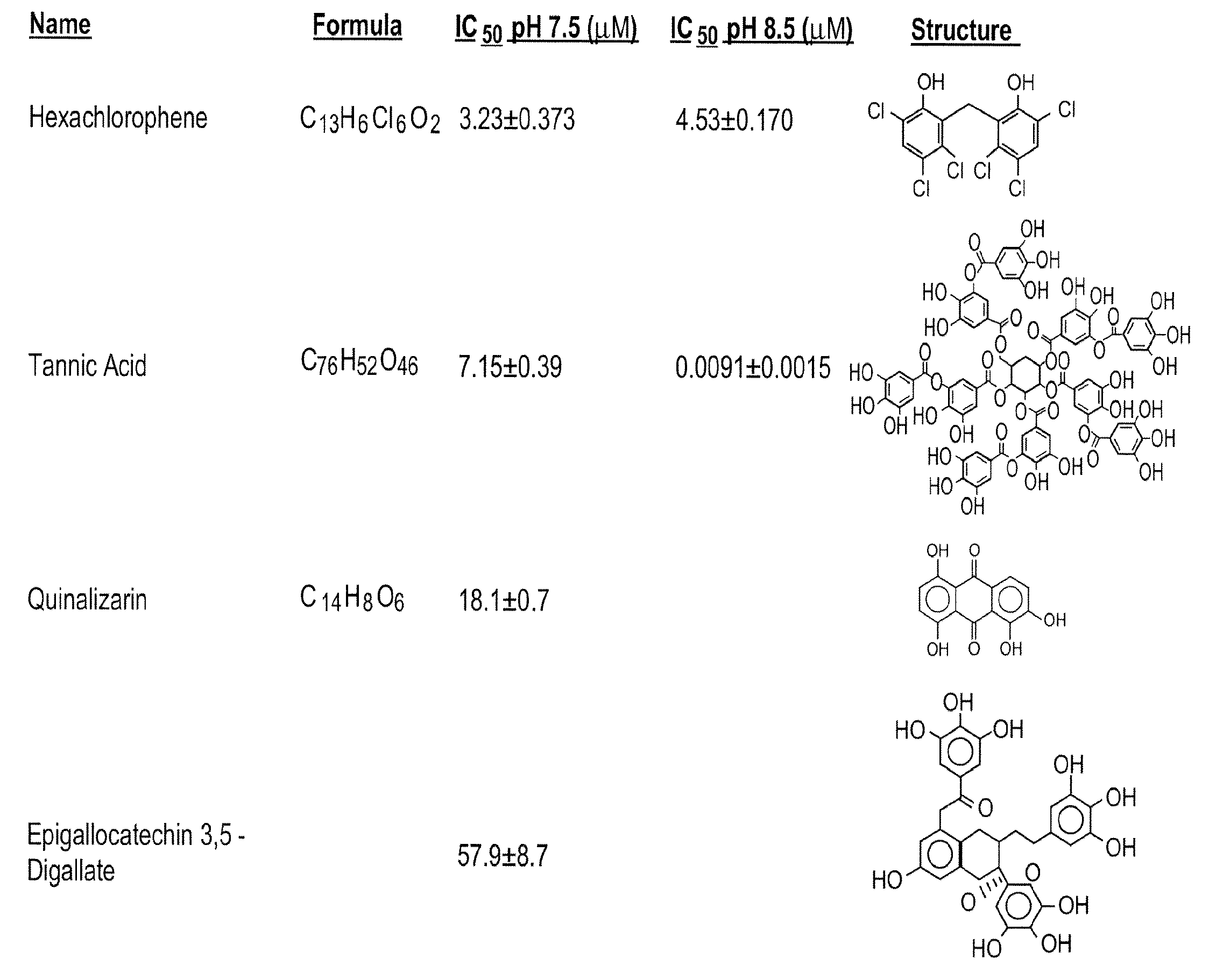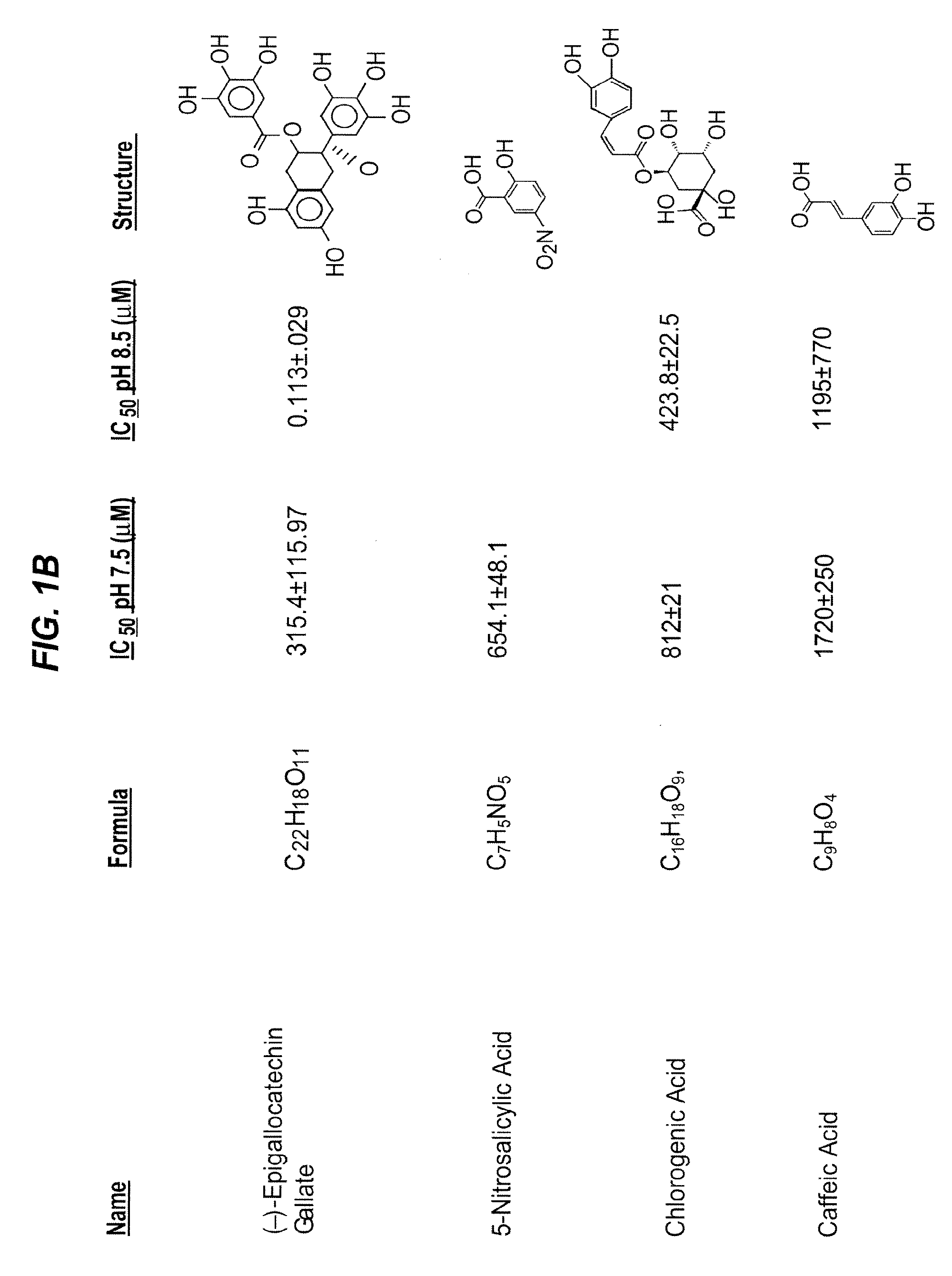Plasminogen Activator Inhibitor-1 Inhibitors and Methods of Use Thereof to Modulate Lipid Metabolism
- Summary
- Abstract
- Description
- Claims
- Application Information
AI Technical Summary
Benefits of technology
Problems solved by technology
Method used
Image
Examples
example 1
PAI-1 is Involved in Lipid Metabolism
[0428]To determine whether PAI-1 is involved in lipid metabolism, plasma lipid profiles were compared between wild-type C57BL / 6J mice, and PAI-1 null (PAI-1− / −) C57BL / 6J mice fed a standard mouse chow (#5001, Harlan Teklad, Indianapolis, Ind.). Citrated plasma was collected and analyzed for total cholesterol and triglycerides by enzymatic assay for individual lipoproteins by HPLC.
[0429]There was a highly significant increase in total cholesterol in mice lacking PAI-1 compared to the wild-type control mice on the same diet, with cholesterol rising an average of 38% in PAI-1 null mice, from 46 mg / dl to 63 mg / dl. This increase in cholesterol was primarily due to a significant increase in HDL, which increased from an average of 37 mg / dl in the wild-type mice to 49 mg / dl in the PAI-1 null mice. There was a modest but significant increase in LDL, and modest but not significant increases in VLRL and triglycerides in the PAI-1 null mice. Taken together, ...
example 2
The Identification of Novel High Affinity Small Molecule PAI-1 Inactivating Compounds
[0430]Because the pharmacological inactivation of PAI-1 is a useful strategy for raising plasma HDL levels, the identification of compounds that inactivate PAI-1 is important for treating high cholesterol and understanding the mechanism of PAI-1 inactivation and the role of PAI-1 in lipid metabolism. As set out previously herein, PAI-039 (tiplaxtinin) has limitations as a PAI-1 inactivating compound. Specifically, its affinity for PAI-1 is relatively low (˜10-20 μM), and PAI-039 does not inhibit vitronectin bound PAI-1. Therefore, methods for the identification of novel PAI-1 inactivating compounds were carried out.
[0431]These experiments were carried out at the High Throughput Screening (HTS) facility of the Center for Chemical Genomics (CCG) at the University of Michigan. The HTS facility allows high-throughput screening of chemical libraries, and currently has a compound collection of over 53,000...
example 3
Tannic Acid Inhibits PAI-1:Plasminogen Activator Complex Formation and Stimulates PAI-1 Cleavage
[0447]The mechanism of tannic acid inactivation of PAI-1 was investigated using SDS-PAGE analysis. This analysis tests for the ability of a compound to block complex formation between PAI-1 and PA. PAI-1 (1 μg) was incubated with tannic acid at various concentrations from 0-100 μM (FIG. 3) for 15 min at 23° C. in assay buffer. Urokinase PA (FIG. 3A) or tPA (FIG. 3B) (1 μg) was added, and complexes were formed at 23° C. for 5 min. SDS buffer (reducing) was added to the samples, which were then boiled for 15 min and size-separated on 4-20% Tris-HCl gels by SDS-PAGE. Proteins were stained with Coomassie blue and scanned. In FIG. 3, the numbers above the lanes indicate the concentration of tannic acid, and the arrow with the dashed line indicates the position of cleaved PAI-1.
[0448]The data indicate that, like PAI-039, tannic acid also converts PAI-1 to a substrate for PAs (FIG. 3).
PUM
| Property | Measurement | Unit |
|---|---|---|
| Electrical conductance | aaaaa | aaaaa |
| Electrical conductance | aaaaa | aaaaa |
| Electrical conductance | aaaaa | aaaaa |
Abstract
Description
Claims
Application Information
 Login to View More
Login to View More - R&D
- Intellectual Property
- Life Sciences
- Materials
- Tech Scout
- Unparalleled Data Quality
- Higher Quality Content
- 60% Fewer Hallucinations
Browse by: Latest US Patents, China's latest patents, Technical Efficacy Thesaurus, Application Domain, Technology Topic, Popular Technical Reports.
© 2025 PatSnap. All rights reserved.Legal|Privacy policy|Modern Slavery Act Transparency Statement|Sitemap|About US| Contact US: help@patsnap.com



